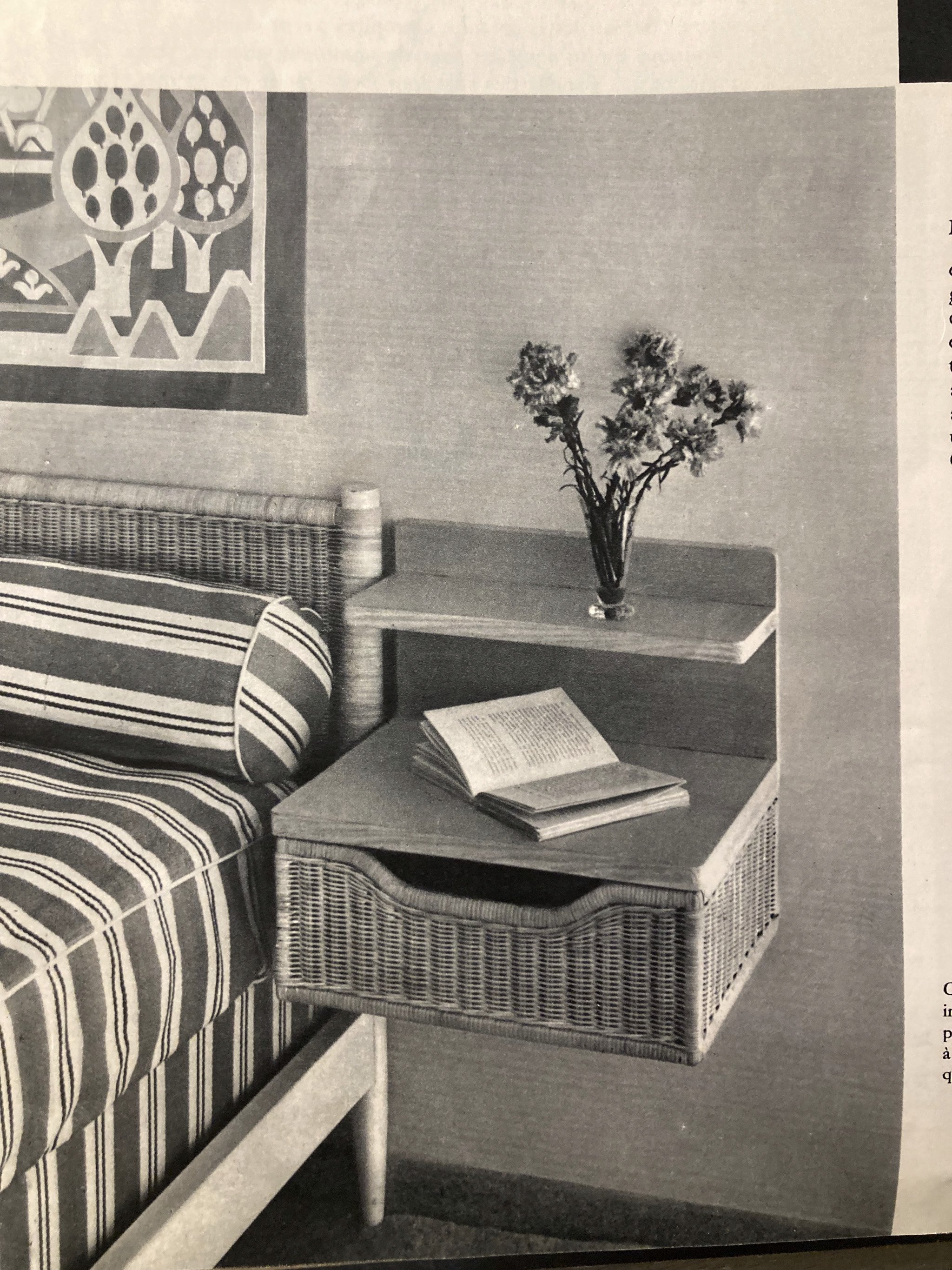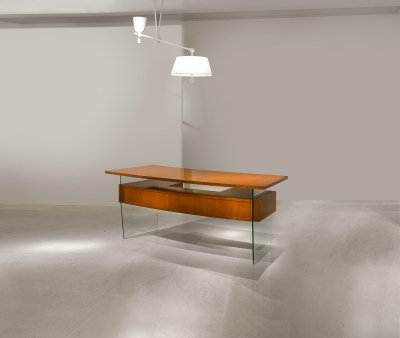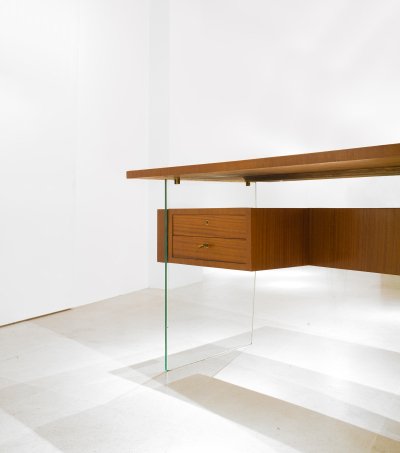Jacques Dumond
He sought to renew the means of design expression by making *“what industry provides both perceptible and human, useful and beautiful.”*¹ In 1945, he became a member of the Union des Artistes Modernes, founded by Robert Mallet-Stevens in 1929, as well as of the Société des Artistes Décorateurs.
After a brief study of cabinetmaking at the École Boulle, the 1925 Exhibition drew him toward modernity. He went on to co-found the Institut d’Esthétique Industrielle with Jacques Vignot, and later the Formes Utiles association with André Hermant.
His true career began in 1943, when he designed a highly ergonomic rattan armchair with undulating lines. The postwar period proved the most prolific. In partnership with Louis Sognot, Dumond took part in reconstruction efforts. Together, they carried out research on mass-produced furniture and the use of molded plywood, though these projects were abandoned due to lack of industrial support.
As a professor at the École des Arts Décoratifs and the École Camondo, Dumond passed on this new formal vocabulary to a younger generation of decorators. His influence extended to the creation of an aesthetic characteristic of his time: the use of Formica. Yet he remained closely tied to a private clientele, believing that luxury continued to drive the evolution of French decorative arts.
As an interior architect, Dumond was a technician of color and light. The forms he designed were always conceived to integrate seamlessly into their environment. Furniture, in his view, had to be functional above all. Its aesthetic and material qualities ensured its durability, while color and materials brought sensitivity and playfulness.
¹ In Les Décorateurs des années 50 by Patrick Favardin, Norma Editions, Paris, 2002, p. 82.




